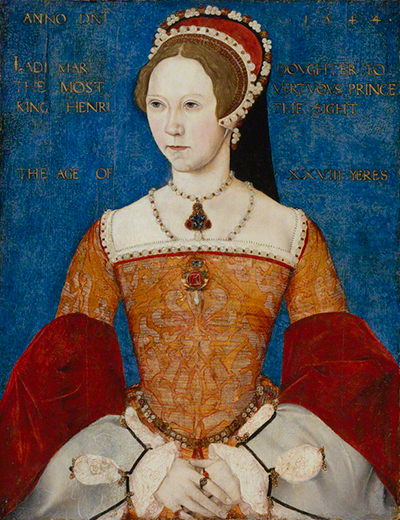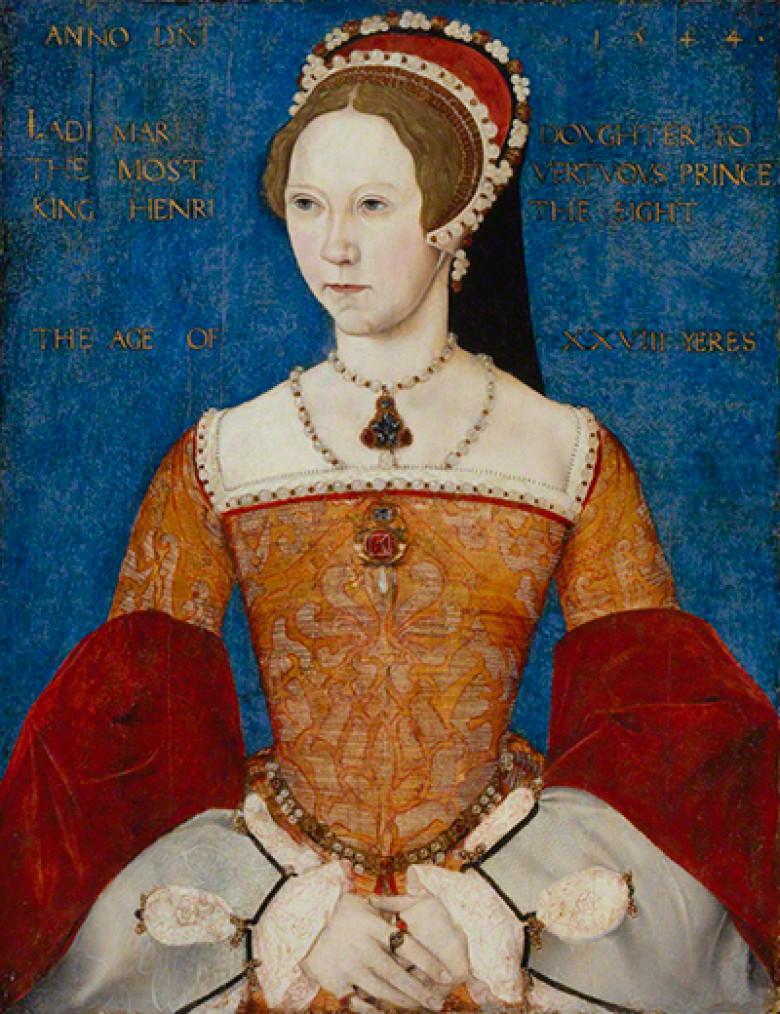19th July 2017

Today in 1553, Mary Tudor was named as queen, ending Jane Grey’s nine-day reign. Mary was the daughter of Henry VIII and his first wife Katherine of Aragon.
By changing the succession shortly before his death, Edward VI set in motion a new struggle for the throne. John Dudley Duke of Northumberland had assisted Edward in this – displacing Mary as the heir and installing his daughter-in-law Jane on the throne. Northumberland knew that Mary would have to be isolated for this plan to succeed. In order to trap her, Mary was summoned to London with the news that her gravely ill brother wished to see her, but she was warned in time to turn back. Now knowing of this plot against her, Mary was encouraged by some to flee England for her own safety – but she refused to do this, knowing that she would be forfeiting her right to be queen by leaving. Mary was determined to fight for her throne.
When Edward VI died on 6 July, Northumberland attempted to keep the news suppressed. He did not want to risk shows of public support for Mary – after all, in the eyes of the public, she was the heir – but the news reached Mary, and she took action.
Mary wrote to the Privy Council. In this letter, she questioned why they had not informed her of Edward’s death themselves and stated her claim to the throne. She demanded their allegiance and charged them with proclaiming her as queen in London and elsewhere. Mary made her expectations clear, and began to strengthen her position.
Jane’s council knew they would have to act against Mary who, by 12 July, was at Framlingham Castle in Suffolk where she and her growing number of supporters were fortifying themselves. Northumberland set out to attempt to capture her, but quickly saw that she had overwhelming public support and was gathering a sizeable army. When the Council’s fleet defected to Mary, it was clear that Jane’s cause was lost.
And so, within just a few days, the Privy Council also switched their allegiance to Mary and proclaimed her queen. Mary, who had lived much of her life in uncertainty, had successfully seen off the challenge to her throne – all at a time when people viewed women as unfit to rule.
While the public celebrated the new queen, Jane had been abandoned by her supporters. It was her father who returned to the Tower to tell her she was no longer queen. She would be held prisoner in the Tower for the rest of her life.
You can read about this race to the throne in my new book, The Last Tudor. It will be out on 8th August and can be pre-ordered here: UK | USA | Canada | Australia & New Zealand
Image: Queen Mary I by Master John, 1544, National Portrait Gallery (NPG 428)
